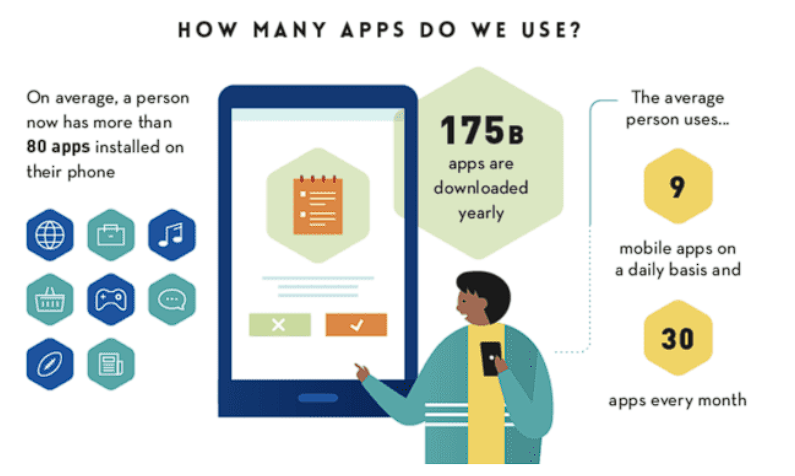Extended reality design continues to evolve. As we open ourselves up to new technology, and new forms of interactive content, extended reality has become a popular necessity in the design world, especially if business leaders want to stay in the game.
Consumers are pushing for more immersion across all sectors. From fashion and retail to gaming and even workplace training, AR and VR technology has become the new norm in a number of industries.
So, it’s no wonder that program designers and tech developers are stepping up their game this season. On the back of Apple’s new Vision Pro release, XR-powered content will one day be as popular as the iPhone.
From headset domination and consumer-focused design to haptic and spatially driven development, here are some of the key XR trends to watch out for in 2023 and, more importantly, jump on top of if you want to stay afloat.
Vision Pro’s Domination
One of the key drivers of XR design trends in 2023 has to be Apple’s newest VR-powered headset, the Vision Pro. After being released in May this year, the revolutionary immersive device will redefine how we interact with content and push for new demands from app and program designers and developers.
“You can immerse yourself in movies, TV shows, and sports and feel like you’re right there. You can take photos and videos and then enjoy those and bring back memories as if you were there and repeating that experience,” says Apple CEO Tim Cook.
Headset wearers don’t only get to interact with 3D content, but thanks to the control-free features, they can navigate their experience using just their eyesight and a number of hand gestures. In an attempt to mimic hyper-realistic experiences, Apple’s Vision Pro will significantly up the stakes for IOS app developers, streaming services and work-based platforms such as Zoom. Unlocking new avenues for augmentation, the demand for an upgraded VR experience will continue to rise this season.
“It’s not about one thing, it’s — it is a platform. And so we can’t wait to unleash it to the developers so they can begin to work on applications for it,” said Cook in an Interview with Good Morning America.
Consumer-Driven Design
On the topic of Apple’s Vision Pro, it’s time to talk about the role of social XR in the design industry. As more of us tap into social environments using an AR/VR device, XR design is becoming much more consumer orientated.
In 2023, we can expect more social XR applications and VR spaces that prioritise collaboration as well as stunning graphics and immersive experiences.
Did you know that a whopping 77% of people who already interact with VR technology deamnd greeted avenues for socialisation?
According to experts at Greenlight, “Led by Generation Z and Millennials, 77% of respondents who own a VR headset say they are interested in interacting socially with other people in VR. “Playing games, watching videos, and video communications ranked highest as social VR activities of interest.”
While emerging AR/VR design trends may be dominated by clever graphic storytelling and the use of spatial and haptic XR, it’s vital not to forget about consumer interaction. The more social a VR space is, the more engagement it’ll drive.
A Push For App-Based Design
Did you know that 88% of mobile engagement comes from smartphone applications? Whether it’s social media, shopping or Spotify, app-based interaction is growing, making it an essential trend to watch out for, for XR-driven designers in 2023.

In fact, popular AR-powered applications, in particular, have continued to drive engagement over the last few years and have since become a topic of conversation in the app development world, especially as the demands for new levels of immersion grow amongst consumers.
According to experts at GMI, 80% of the mobile app design market will be AR powered by the end of the year. While AR users are not enveloped by a completely new world, AR is a key catalyst for accessibility. Users of AR-powered apps can take their own snippets of reality and enhance their daily tasks. Whether this is for entertainment or productive collaboration, AR apps are now being used by advertisers, remote working platforms and even the gaming industry.
In a new frontier of AR design, developers in 2023 must prioritise personalisation and versatility when designing for AR. Finding new ways to enhance a consumer’s user experience is key, especially as more smartphones, tablets, and headsets unlock opportunities for immersivity.
Heading For a Haptic Future
Last but not least, it’s time to talk about haptics. The whole point of immersive design is to make the user feel as if they are submerged in a new, hyperrealistic environment.
This is where haptic design and spatial audio come in. In order to truly transform an XR-powered experience, all senses must be engaged. As we step further into 2023, designers are doing just that by introducing haptic-driven experiences using body suits, 3D audio and haptic gloves.
“Haptics is one of those technologies that is expected to accelerate XR advancement and grow in adaptation in 2023. The main reason is that the technology allows replicating the sense of touch, one of the final pieces in making XR experiences genuinely immersive,” states Alex Dzyuba, CEO of Lucid Reality Labs. “Incorporating haptics into XR will be one of the growing trends, providing more comprehensive virtual interactions for industries including Healthcare, MedTech, Aerospace, Engineering, Manufacturing, and more.”
The question is, just how much further could haptic design go? One area experiencing mass development, in particular, is 3D audio. Now being adopted by Apple, Microsoft and Sony, an audio-powered multi-sensory experience is being favoured by gamers, music listeners, and remote working teams.
“Spatial audio is no longer a concept limited to the conversations exchanged and products consumed by audio enthusiasts. It has entered pop culture and, with Apple at the helm, won’t be going away anytime soon,” says Frank Fitzpatrick from Amplified Future.
As XR experiences move forwards, designers have a lot on their plates. Not only are consumers demanding more from the apps they interact with, but the introduction of new XR technology, such as Apple’s Vision Pro, will redefine design trends and shift them to a more immersive tomorrow.



































